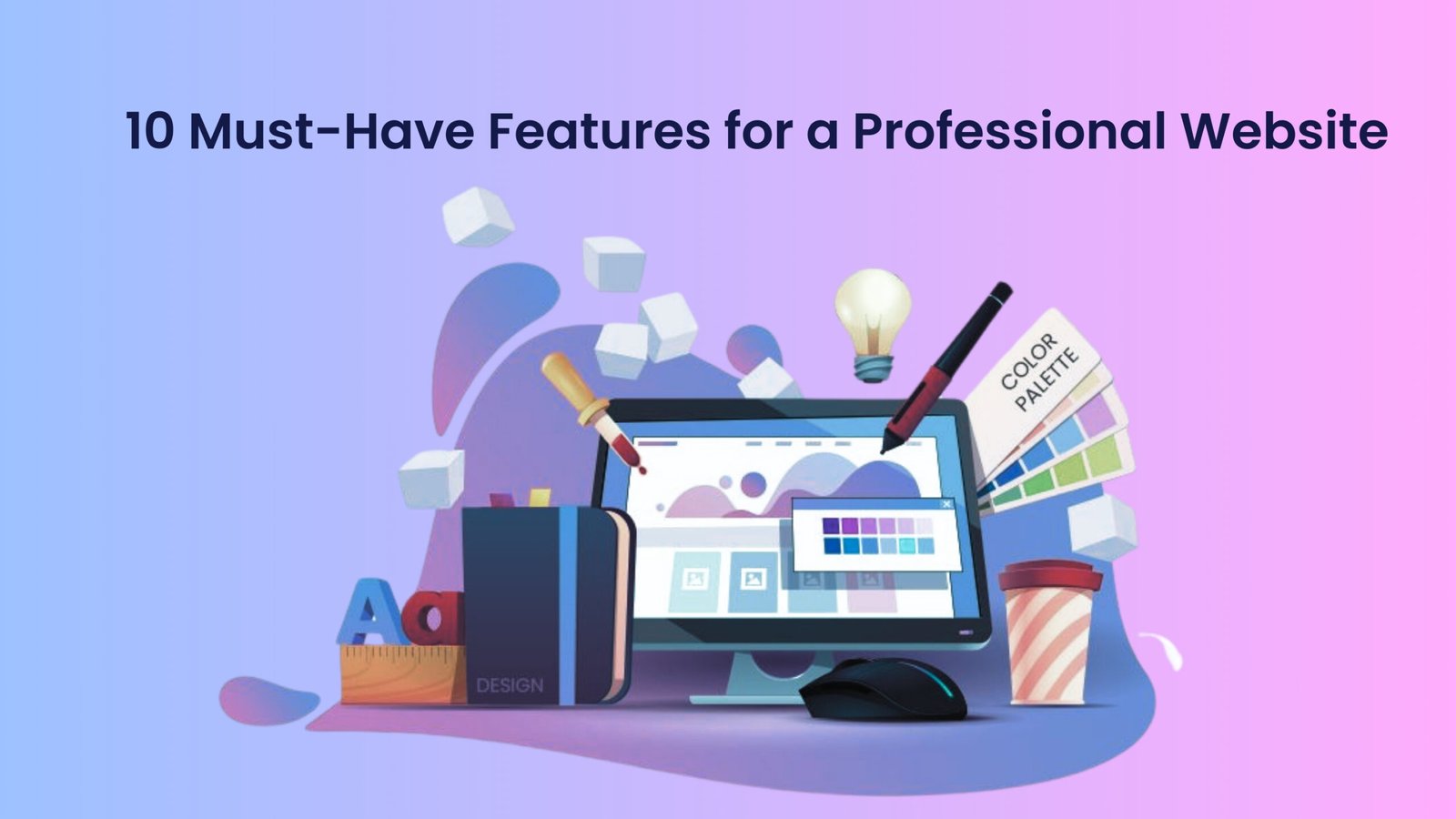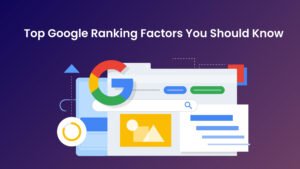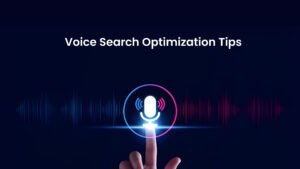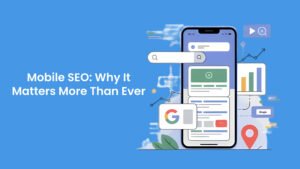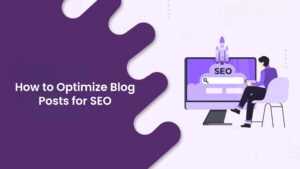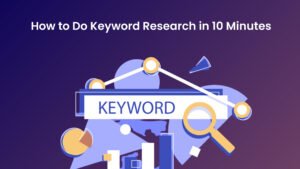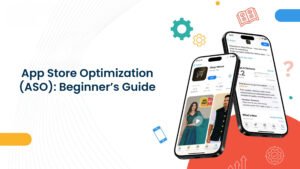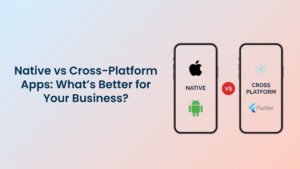Every business today lives and breathes through its website. It’s often the first thing people see when they hear about your company. It’s where trust is built, leads are captured, and sales begin. But here’s what most entrepreneurs miss—having a website is not the same as having a professional website.
A professional website is not just about looking pretty. It’s about working smart. It guides visitors, explains your value, and converts interest into business. Whether you’re launching your first site or revamping an old one, there are a few website design elements that every serious business must include.
Let’s break down the ten must-have features for a professional website that actually drives growth.
1. A Clear and Compelling Homepage
Your homepage is your first impression. Think of it as your digital front door. The moment someone lands there, they should understand three things instantly:
-
Who you are
-
What you offer
-
Why it matters to them
Many entrepreneurs make the mistake of trying to say everything at once. That only creates confusion. A strong homepage communicates in seconds. Use a clear headline, a short description, and a call to action that guides visitors to the next step—whether that’s booking a consultation, exploring your services, or contacting you.
A simple rule: if a stranger can’t describe what your business does after ten seconds on your homepage, it needs work.
When you plan your website design checklist, always start with this: clarity first, creativity second.
2. Mobile Responsiveness
More than 60 percent of website traffic today comes from mobile devices. If your website doesn’t adapt beautifully on phones and tablets, you’re losing leads before they even read a word.
Mobile responsiveness means your website automatically adjusts its layout, fonts, and images for every screen size. It’s not just a design choice anymore—it’s a survival necessity. Google also prioritizes mobile-friendly sites in its rankings, so this directly affects your visibility.
The best website design elements always prioritize mobile usability. When testing your website, browse it on multiple devices and screen sizes. Make sure buttons are easy to tap, text is readable, and load times stay under three seconds.
A must have website is one that feels equally good to explore whether on a large desktop screen or a small phone in someone’s hand.
3. Fast Loading Speed
Attention spans online are brutal. Studies show if a website takes longer than three seconds to load, visitors start leaving. Every extra second costs conversions.
This means your design must not just look great but also perform fast. Optimize your images, remove unnecessary plugins, and use a reliable hosting service. If you’re targeting customers in the USA, use a content delivery network (CDN) with US-based servers to reduce lag.
A professional website feels smooth. Visitors shouldn’t even think about loading times—they should simply move from one section to another without interruption.
When you review your website design checklist, speed should always be one of the top priorities.
4. SEO-Friendly Structure
Even the most beautiful website means nothing if no one finds it. Search Engine Optimization (SEO) is how people discover you on Google.
Start with web design basics—use clean code, proper heading structure, meta tags, and keyword-rich content. But don’t stuff your site with keywords just for the sake of it. Write for humans first, and search engines will follow.
A professional website structure includes:
-
Logical navigation (no confusing menus)
-
Internal links that connect related pages
-
Fast page loading speed
-
Descriptive URLs
-
Optimized meta titles and descriptions
Remember, SEO is not an afterthought—it’s part of your website design elements from the beginning. When your site is built with SEO in mind, it continues to bring organic traffic long after launch.
5. Strong Branding and Visual Consistency
Your website is your digital identity. Every color, font, and image should reflect your brand’s personality. Consistent branding creates recognition and builds trust.
Use your brand colors throughout the site—especially in headings, buttons, and key visuals. Keep typography simple and readable. Choose photography that represents your real business or real people, not generic stock photos.
A good tip: imagine your website without your logo. Would someone still recognize it as yours? If yes, your branding is strong.
One of the most overlooked website design elements is emotional design—the feeling people get when they browse your site. A professional website connects visually and emotionally. It makes people feel like they can trust you with their money or their time.
6. Easy Navigation and User Experience
A website is like a conversation. It should guide the visitor naturally. If people can’t find what they’re looking for in three clicks, they’ll leave.
Keep your menu simple—five to six main items are usually enough. Label them clearly (Home, About, Services, Blog, Contact). Avoid jargon or fancy words that confuse users.
Add a search bar if you have a large site, and always include a visible call to action button in your header (like “Get a Quote” or “Contact Us”).
When you plan your website design checklist, spend as much time on navigation as on visuals. Great design without intuitive navigation is like a beautiful store with no signs—it looks nice, but no one buys anything.
7. Compelling Content and Storytelling
Good design attracts attention, but great content holds it. Your website content should do more than describe your services. It should tell your story.
Why did you start your business? What makes your approach unique? What problem do you solve better than anyone else?
Use real examples, testimonials, and case studies to prove your value. Write conversationally, like you’re speaking to one person.
A must have website communicates with authenticity. It doesn’t just list services—it builds a connection. When people feel understood, they’re far more likely to buy or contact you.
Also, include a blog section. It’s an excellent way to improve SEO, share insights, and keep your site active. Blogs that discuss web design basics, tips, and industry trends also position you as an authority in your field.
8. Strong Security and Trust Signals
Visitors today are cautious. They won’t fill out a form or enter their credit card if they don’t feel safe. Security is one of the most critical professional website features.
Install an SSL certificate so your site runs on HTTPS. It encrypts data and displays a small lock icon in the browser bar—a simple yet powerful trust symbol.
If you accept payments or store user information, use reputable payment gateways and data protection tools.
Display trust badges, client logos, or certifications where relevant. Add a privacy policy and terms page. These aren’t just formalities—they show that your business operates transparently.
Remember, trust converts. A secure website is not only good for users but also helps your SEO ranking since Google favors secure sites.
9. Clear Call-to-Actions (CTAs)
Visitors rarely take action unless you tell them what to do next. A call-to-action is not just a button—it’s an invitation.
Common CTAs include “Book a Free Consultation,” “Start Your Project,” or “Get a Quote.” But the best ones are contextual. For example, on a product page, you might say “See How It Works.” On a blog, “Download the Full Guide.”
Every page should have one clear CTA. Too many options can create confusion.
A must have website uses CTAs strategically to guide users step by step—from curiosity to decision. This is where design psychology meets marketing.
10. Analytics and Conversion Tracking
You can’t improve what you don’t measure. Once your website is live, install analytics tools like Google Analytics and heatmap software to see how visitors behave.
Which pages do they visit most? Where do they drop off? Which CTAs perform best?
These insights help you refine your design and content. A professional website is never really “done.” It evolves based on real data.
Include conversion tracking pixels for platforms like Facebook or Google Ads if you plan to run campaigns. This lets you retarget visitors who showed interest but didn’t convert—an essential part of your marketing funnel.
Analytics might sound technical, but it’s part of the web design basics that every entrepreneur should understand. It helps you make decisions based on evidence, not assumptions.
Putting It All Together: The Website Design Checklist
Let’s recap what your website design checklist should include if you want to build a truly professional presence online:
-
A clear and purpose-driven homepage
-
Mobile responsiveness for all devices
-
Fast loading speed
-
SEO-friendly structure
-
Consistent branding and visuals
-
Intuitive navigation
-
Engaging, authentic content
-
SSL security and visible trust signals
-
Strong and relevant CTAs
-
Analytics for performance tracking
If you follow this checklist, you’re not just building a website—you’re building a sales engine that runs 24/7.
Common Mistakes Entrepreneurs Make While Building Websites
It’s easy to get lost in the creative side of design and forget the strategic side. Many entrepreneurs either overcomplicate their websites or leave them half-baked.
Here are the most common mistakes to avoid:
-
Using too many fonts or colors that confuse the visitor.
-
Forgetting to add clear CTAs.
-
Ignoring mobile optimization.
-
Copying competitors instead of building your own identity.
-
Launching without testing load speed and SEO setup.
Every website should start with a plan. Spend time defining your goals and target audience before the design begins. That clarity will save you thousands of dollars later.
The Role of Professional Web Designers
You can build a simple site yourself with platforms like WordPress or Webflow. But if you’re running a serious business and your website drives leads or sales, it’s worth hiring professionals.
A professional design team doesn’t just make your website look better. They understand psychology, SEO, conversion design, and brand identity. They build websites that not only attract visitors but convert them into clients.
Think of it this way: your website is your 24-hour salesperson. It deserves the same attention as your top employee.
When you hire the right partner, you’re investing in an asset that keeps generating business long-term.
Why These Features Matter for USA Businesses
The US market is competitive and saturated with options. Customers here expect speed, credibility, and polish.
A professional website acts as proof of legitimacy. Whether you run a consulting firm, an eCommerce brand, or a local service business, your website determines whether someone trusts you enough to reach out.
When people visit your site, they compare it with others in seconds. If it looks outdated, slow, or confusing, they move on. That’s why these professional website features aren’t optional—they’re the cost of entry in a competitive market.
By following this website design checklist, you give your brand a strong foundation. You create an online space that looks modern, feels trustworthy, and performs efficiently.
Building a Must Have Website: Your Next Step
If your current website feels outdated, slow, or unclear, it’s time for a change. You don’t need to start from scratch, but you do need to upgrade with intention.
Start with a website audit. Go through every page and check how it performs on the ten features we discussed. Ask real customers or friends for feedback. If multiple people tell you it’s confusing, believe them—it probably is.
Then, create an action plan. Prioritize what impacts users most: speed, clarity, and design flow. After that, improve content and SEO.
And if you don’t have the time or expertise, partner with a professional agency that specializes in high-performance websites. They can help you align design, technology, and marketing under one vision.
A must have website is not built overnight, but it can transform your business faster than any social media campaign or paid ad. It’s your foundation, your credibility, and your voice online.
Final Thoughts
A website is more than digital real estate. It’s a statement of who you are and how you want to be perceived.
When built right, it becomes your most valuable business asset—bringing leads, building relationships, and converting visitors without constant effort.
If you focus on these ten professional website features and follow the website design checklist, you’ll have a strong foundation that sets your business apart.
In the end, a truly professional website doesn’t just look good—it works hard behind the scenes, every hour of every day, growing your business while you sleep.

